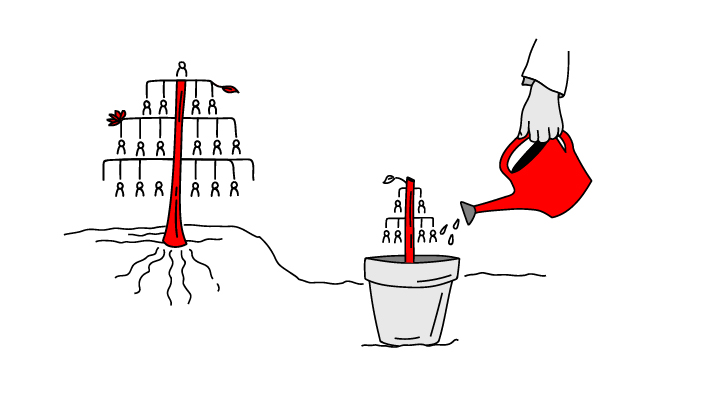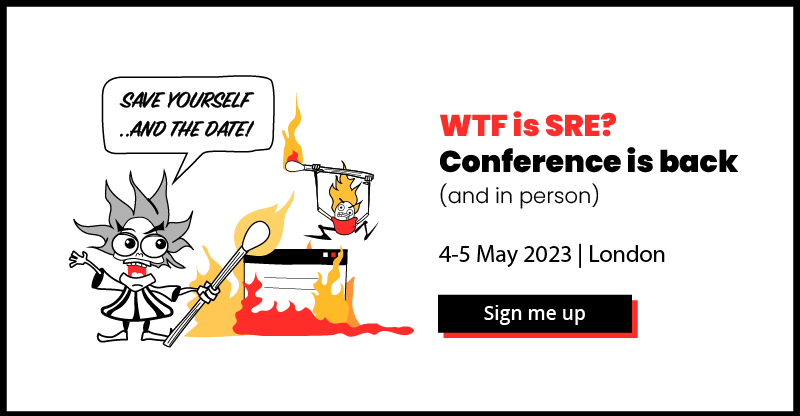Dynamic Reteaming is about the structural changing of teams as well as team dynamics and the feel and perception of those changes. Whilst proponents of Scrum tend to advocate for stable teams, the reality is that reteaming is inevitable. It’s all just a matter of time. People are going to come and go from your teams, and your teams are going to change in a variety of ways, for a variety of reasons. Sometimes you might drive the reteaming deliberately, and at other times you will be the recipient of this team change and it might surprise you. In this article, I’ll give some background around dynamic reteaming and then offer three tactics you can apply to maximise your chances of success.
Reteaming can happen due to growth or attrition. When your company is scaling up, people are hired, onboarded and integrated into teams. When you are doing this well and you feel like you’re on top of it, these are good times and it feels like your company is thriving. Conversely, if your company must shrink, it can be enormously difficult. It takes time and patience to have enough transition time for renewal and things start to feel different. These are the far extremes of dynamic reteaming. But it’s not always extreme.
I’ve identified five predictable patterns of team change that I write about in my book, Dynamic Reteaming:
- One by one—someone joins a team or leaves a team
- Grow and split—the team gets bigger and then splits into one or more teams
- Merging—teams combine or merge together to form a larger team
- Isolation—a new team is created in a beneficial silo
- Switching—someone moves from one team to another team
You might experience more than one of these patterns happening either simultaneously or in close proximity, and at multiple levels of granularity—let’s say, from the company level to the individual level. For example, at the company level, your company might acquire another. At around the same time, your favourite coworker might switch from your team to another team inside the company. In addition, a team that you work with frequently might grow so large that it splits in half to better manage its workload and communication.
Indeed, all of this can feel like a lot of movement around you—like a tree that is swaying in the wind and some of the branches are growing stronger and shifting, some branches are breaking off and falling to the ground, other branches are sprouting new leaves, and the branches of another tree are inching closer to you. Sometimes I think about all of this like the time-lapse photography of a garden—growing, blooming, changing.
Depending on how you are able to cope with dynamic reteaming, your feelings about it may vary. You might find that things feel uncomfortable, exhilarating, scary or completely normal depending on your organisational position and vantage point. People are different, and so are our perspectives on dynamic reteaming.
All of this team change happens in at least three different ways. First, it might catalyse a change for yourself, such as talking to your manager and requesting to change teams. Second, you might be in the position where you are collaborating, for example, on a larger-scale reorganisation-type-change that impacts twenty-plus people. Or third, someone else decides that things are going to change, and you just need to deal with it and get through it. For this third case, you have likely experienced people joining or leaving your teams, and beyond that maybe some of the five patterns explained above.
Giving people a voice
If you want to cultivate an environment where people can participate in decision making related to organisational growth and development, my advice is to focus on giving them a voice. Include people the best you can in the reteaming. Here are three ways to include people when embarking on or experiencing dynamic reteaming.
First, if you are starting a new team, one idea is to announce to the team at large that you are doing this, what it entails, and see if anyone from the existing team expresses interest to be on the new team. What I like about this approach is that instead of handpicking people to come to a new team, you see who identifies themselves as people most interested in pursuing this change. Sharing opportunities within your company is one way to keep people there and sends the message that they can grow in different directions. It’s like a mirror of the outside world as many people hear of other opportunities all the time, and we need to expose the new opportunities within our companies as well. You might think that this comes at a cost to the other teams. That is true, but you might pay a higher cost if someone who is looking for a change finds it outside. You might also wonder, what if no one raises their hand for this opportunity? The next action in this path could be to ask someone directly or hire in for the role.
Second, giving teams the ability to make decisions on how they organise is another approach to dynamic reteaming that has specific guardrails. You can grow teams larger than 10 people and, with coaching and support, you can cultivate them to have regular retrospectives, and tell them they have the ability to self organise within the bounds of their team. I’ve witnessed this at multiple companies. One company called it “opportunity based squads.” They would reteam around the work at hand and together determine what their team configuration would need to be in order to accomplish their goals. What I like about this is that it gives people the ability to make decisions and it doesn’t typically disrupt the broader ecosystem of teams. It’s also a strategy to consider when you are short on specialists like deep subject matter experts in front-end development. If you have smaller bounded teams and not enough specialists, people will try to reteam the specialists across the boundaries which could feel more disruptive than cultivating larger communities of people that can reteam locally, as they would like.
Third, sometimes for good reason, there is a need to do a wider-scale reteaming that involves let’s say more than twenty people. To approach this with more inclusion, you can write down the plan for the team changes, and then visualise the plan using whiteboards (physical or virtual) along with creating a frequently asked questions (FAQ) list enumerating why you are pursuing the changes and answering each and every question you can think might come up. Sharing this information through multiple synchronous sessions where you seek input from people on the changes and iterate your FAQ together, can be beneficial to warm people up to the changes, and also gives them the ability to influence the result. If you’re not on the ground doing the work, and you’re planning a larger reteaming, you are likely to get things wrong. The earlier you start sharing partial plans and getting input, the better. This approach also helps to provide clarity on decision making for the changes. I like using the RIDE framework that I learned from Pat Wodors, the former Chief People Officer at Procore. At the top of your FAQ about the change, you can write down people’s names next to the following RIDE format:
R—requestor or author(s) of the change
I—who is invited to give input
D—who is the ultimate decider on the changes
E—who will execute or carry forth the actions to make the plan a reality
There are undoubtedly more tactics beyond these you can use to include people in dynamic reteaming. Look up what Chris Smith has been doing with self-selected teams at Redgate software, for example, and refer to the variety of stories in the book Dynamic Reteaming.
At the end of the day, many of us spend a large amount of our lives at work. I think it just feels better when we are able to have influence and participate in shaping how our departments are organised, and where we personally focus our time. With thoughtful leadership, we can enable more participation in the decisions we need to make to evolve our tech organisations.



 Previous article
Previous article
